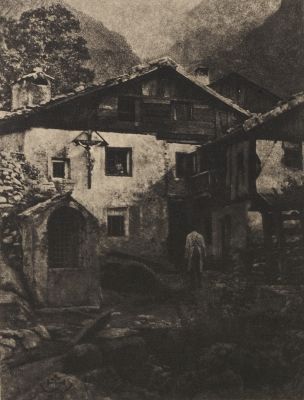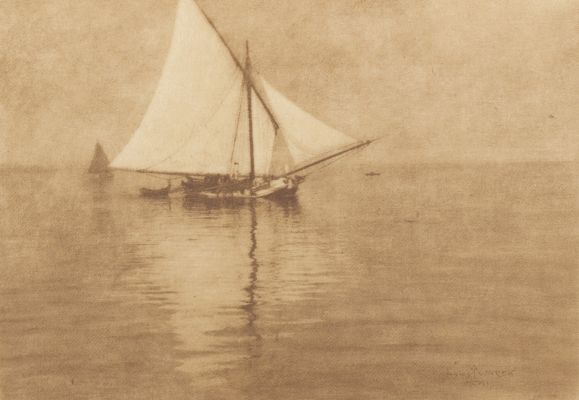
Title
Villa FalconieriArtist
Henneberg, Hugo (Austrian, 1863-1918)Publication
Camera Work XIIIDate
1906Process
PhotogravureAtelier
Manhattan Photogravure Company, NYImage Size
23.8 x 12.8 cm
Hugo Henneberg was a leading Austrian pictorial photographer who became well known in the United States. With Heinrich Kuehn and Hans Watzek, the only other Austrians to be represented in Camera Work, he formed a union they called Das Kleeblatt (the Trifolium). The three made trips to other countries together, exhibited as a group, and earned a reputation for their large-scale gum-bichromate prints, some as big as 3 by 4 feet. In Villa Falconieri, Henneberg used an exaggerated vertical format and an expansive foreground to create a dramatic pictorial effect. Like much of his other work, this photograph shows his consciousness of the great solemnity of nature. By 1910 Henneberg had apparently turned his artistic attention from photography to painting and relief printing. [1]
Reproduced / Exhibited
Frank, Waldo D. America and Alfred Stieglitz: A Collective Portrait. New York: Aperture, 1979. pl. 25
Kruse, Margret. Kunstphotographie Um 1900: D. Sammlung Ernst Juhl; Hamburg: Museum für
Kunst u. Gewerbe, 1989 pl. 455
Marien, Mary W. Photography: A Cultural History. Englewood Cliffs, NJ: SunSoft Press, 2002. fig. 4.13.
[1] Peterson, Christian A. Camera Work: Process & Image : [exhibition, Minneapolis, Minneapolis Institute of Arts, August 31-November 3, 1985, Seattle, Seattle Art Museum, November 22, 1985-February 2, 1986]. Minneapolis: Minneapolis Institute of arts, 1985. p. 57.
References
Peterson Christian A et al. Alfred Stieglitz’s Camera Notes. 1st ed. Published by the Minneapolis Institute of Arts in Association with W.W. Norton 1993.











